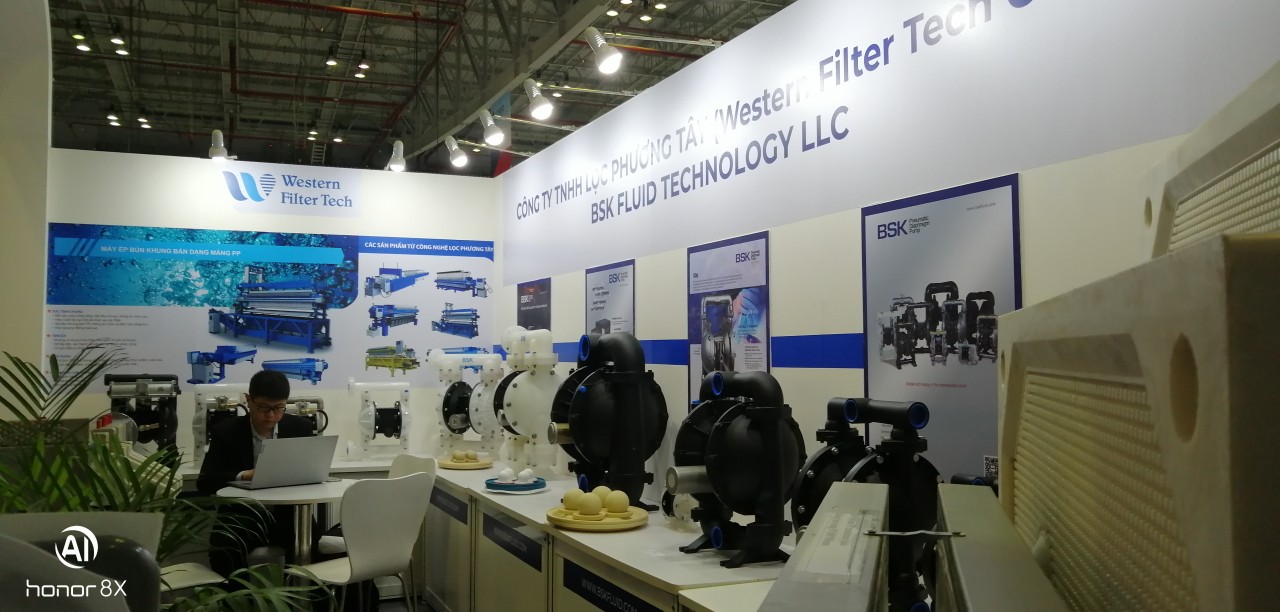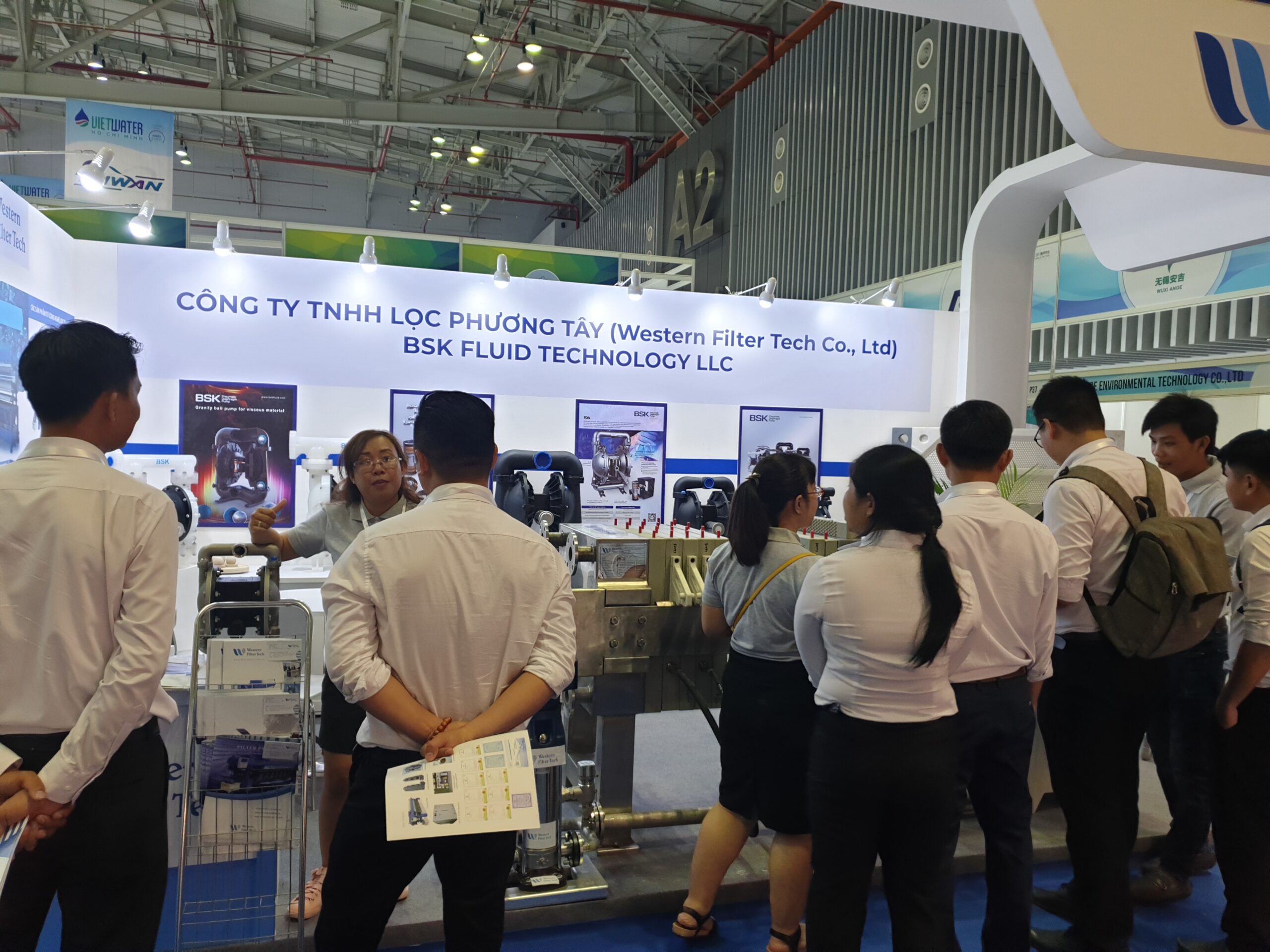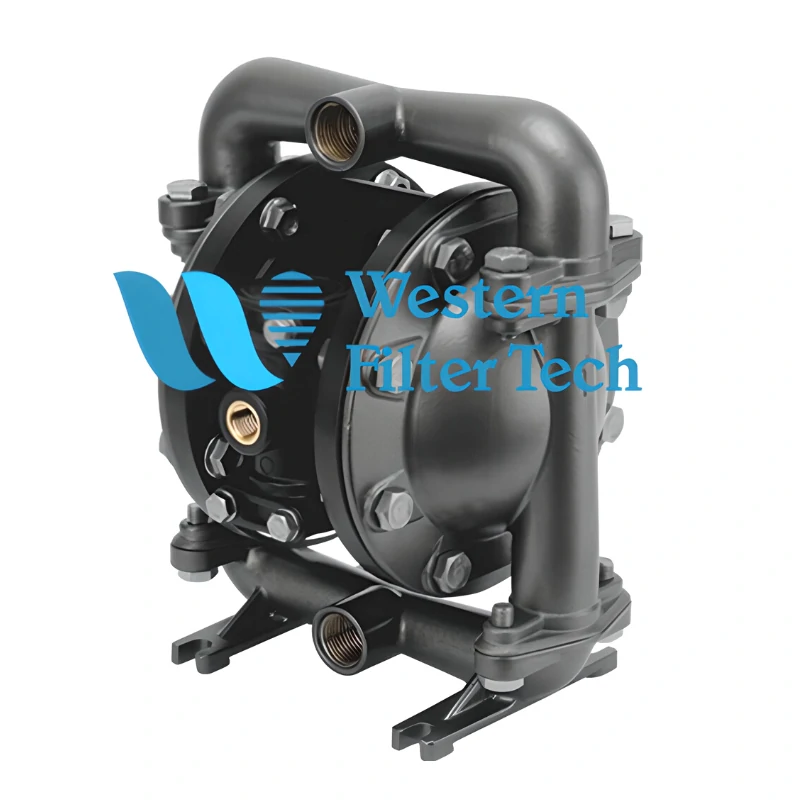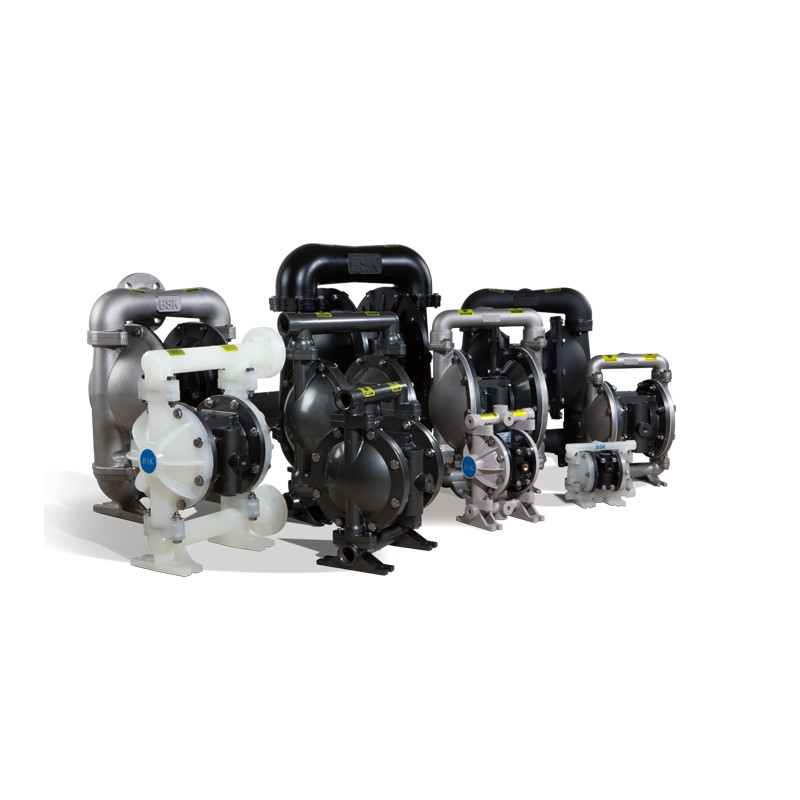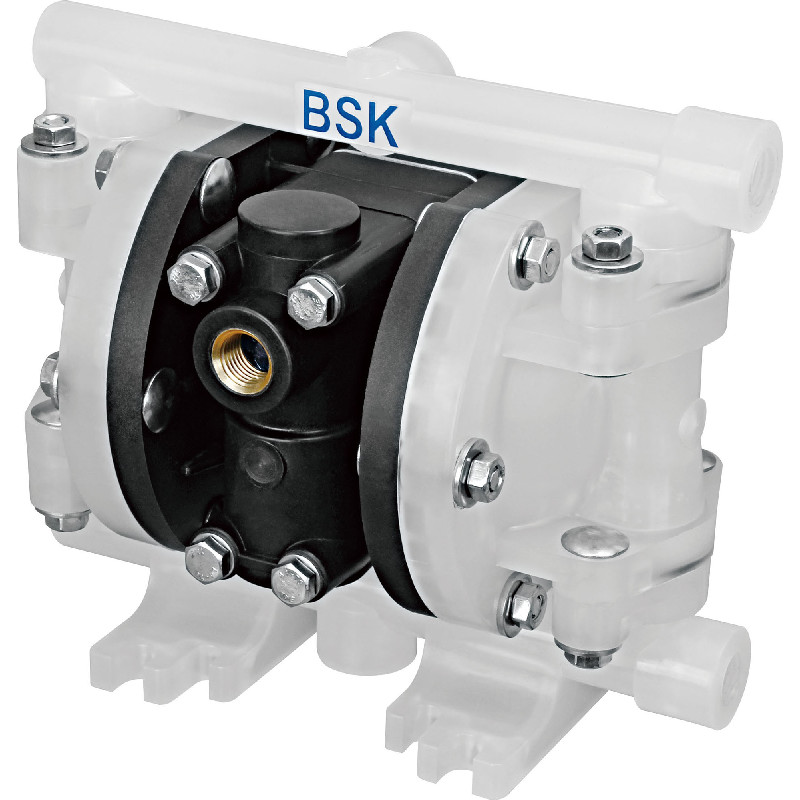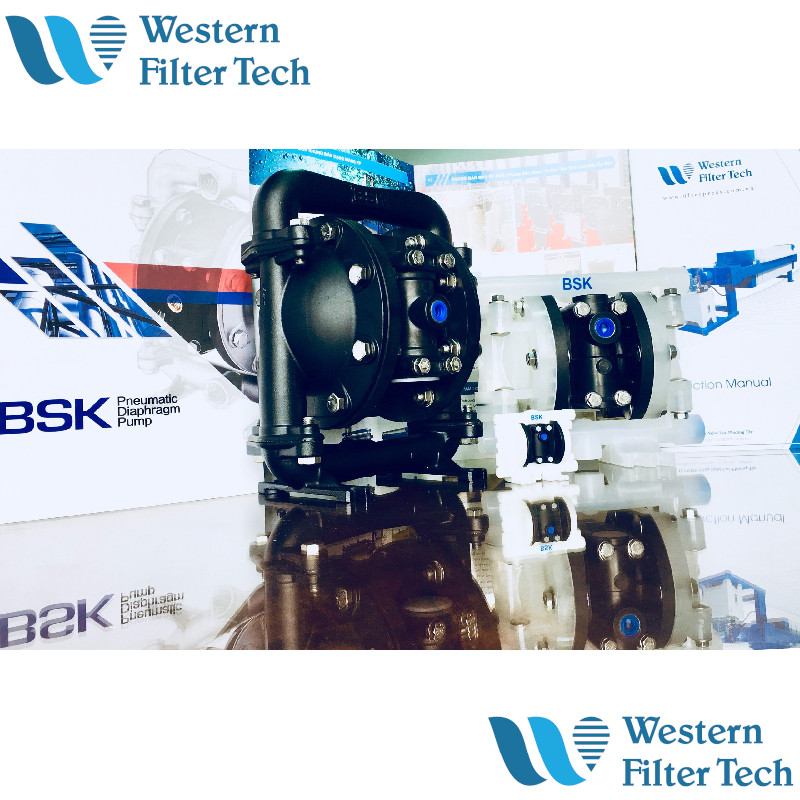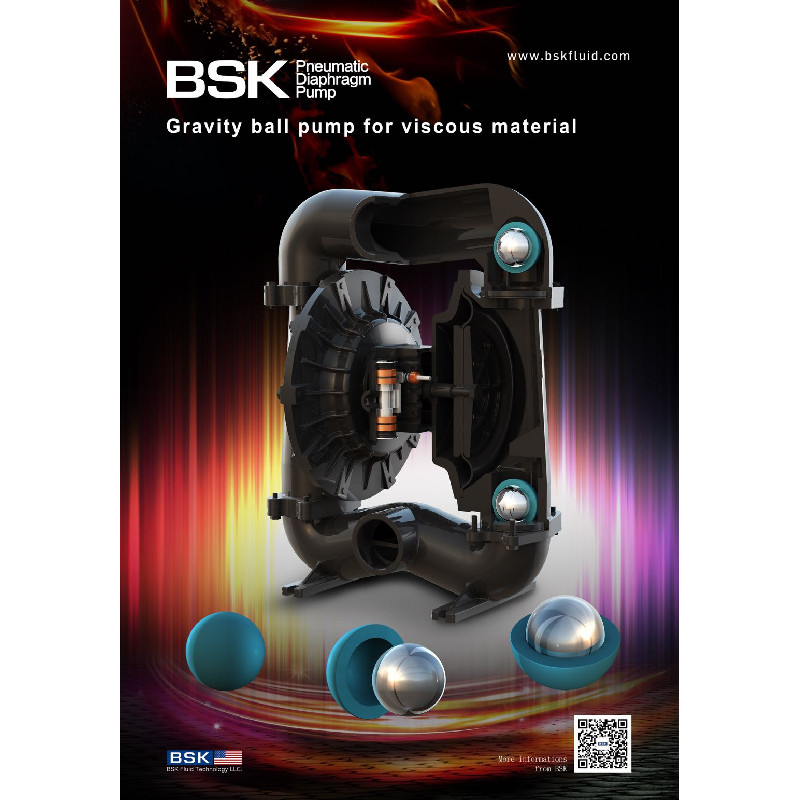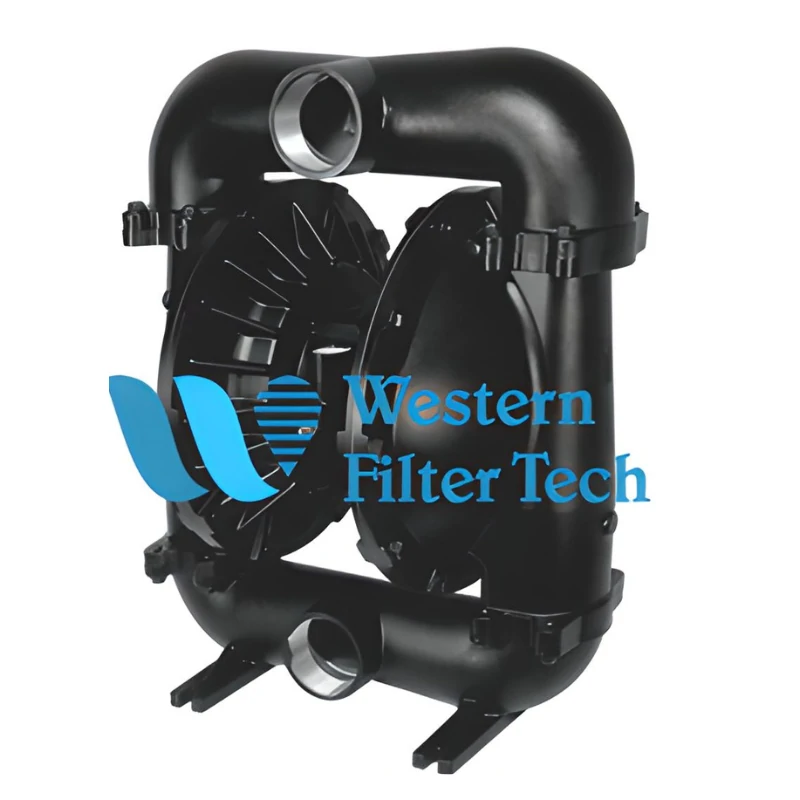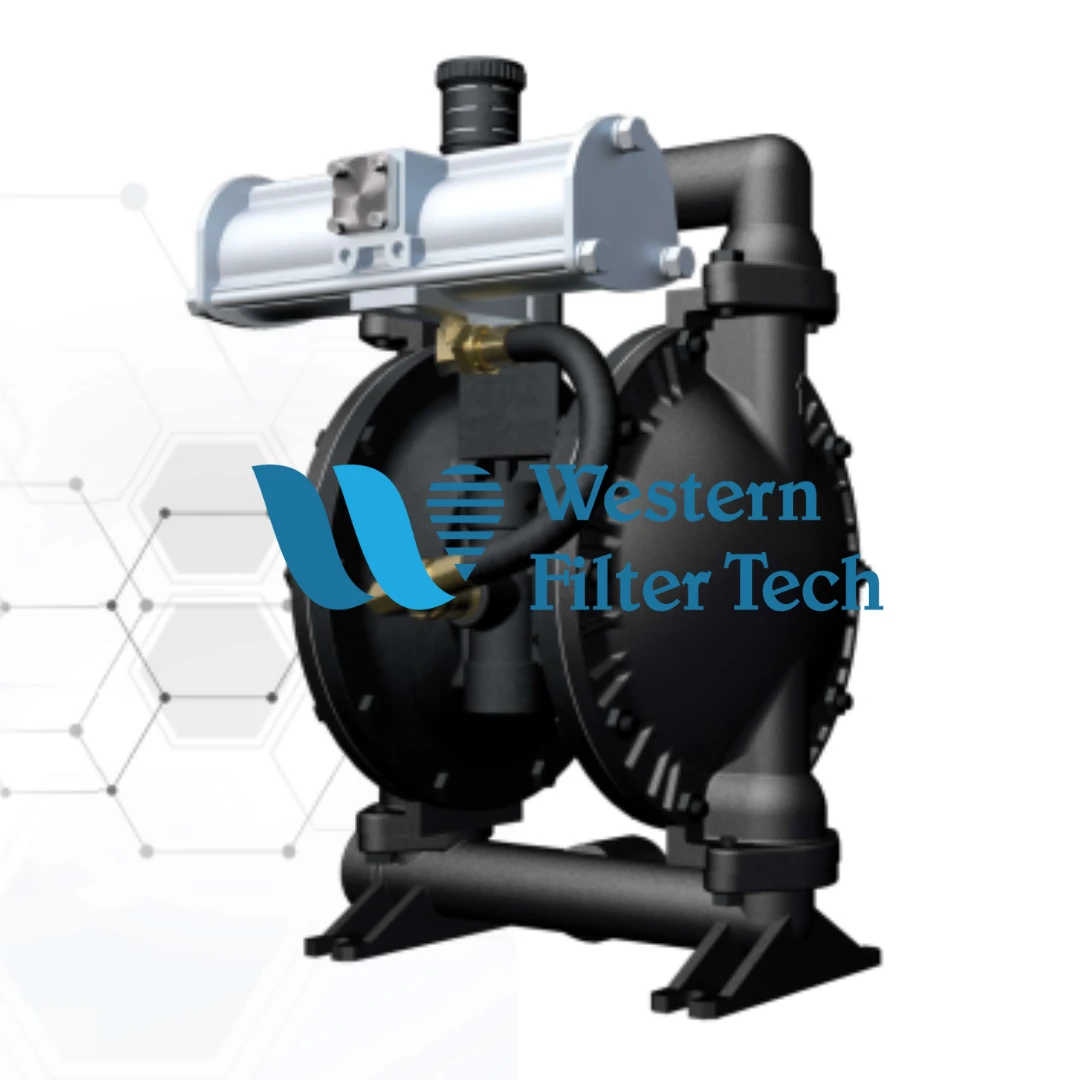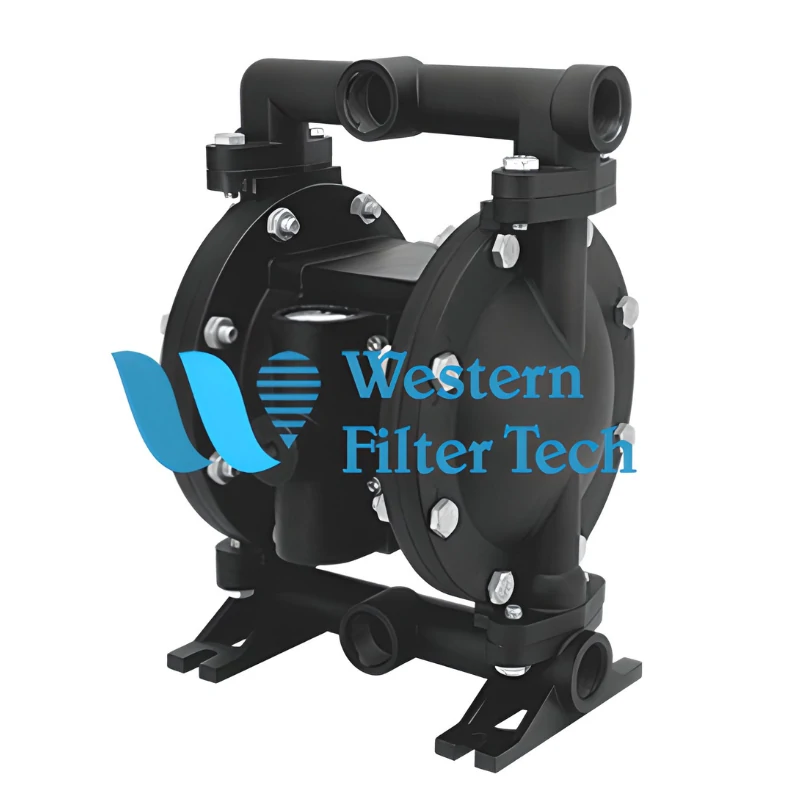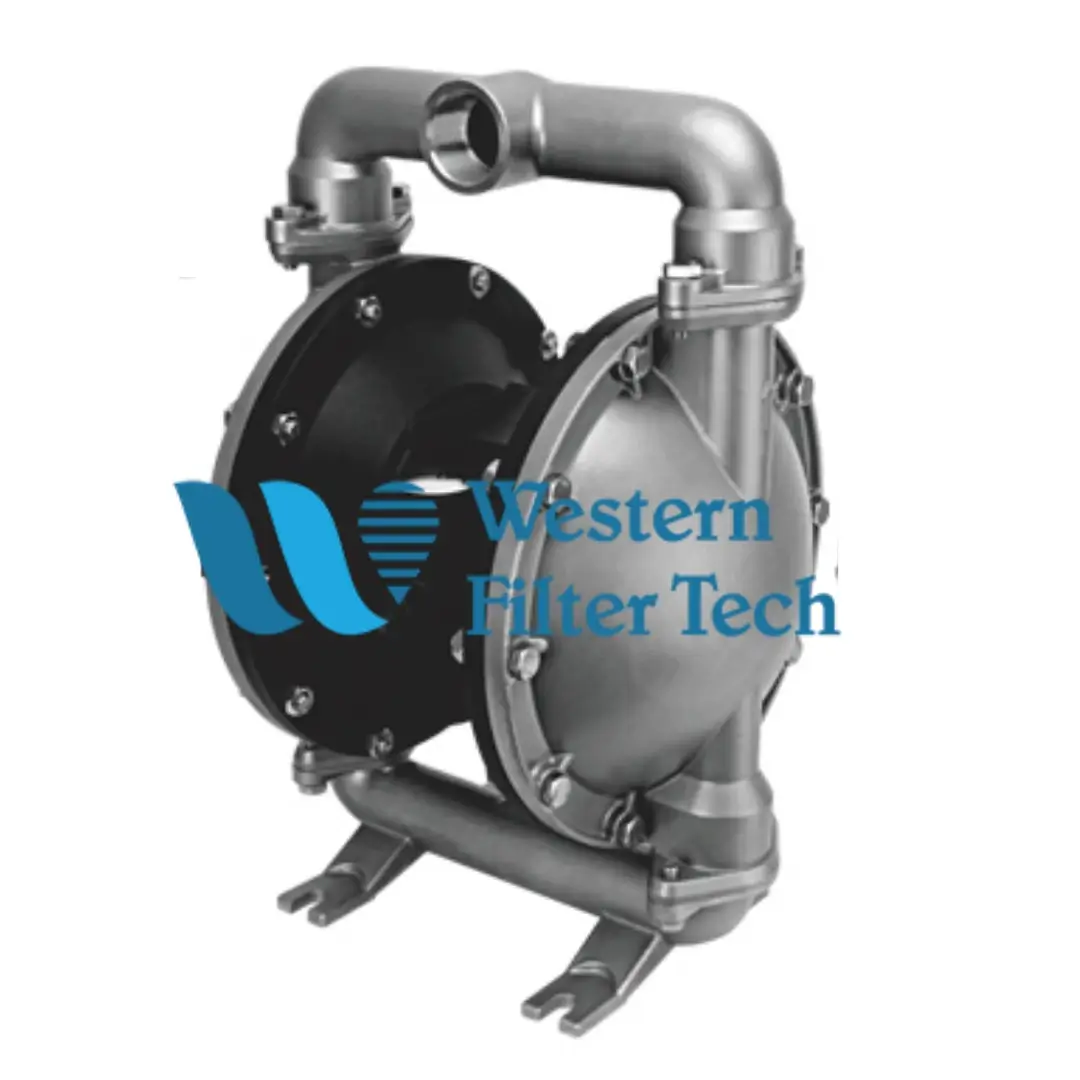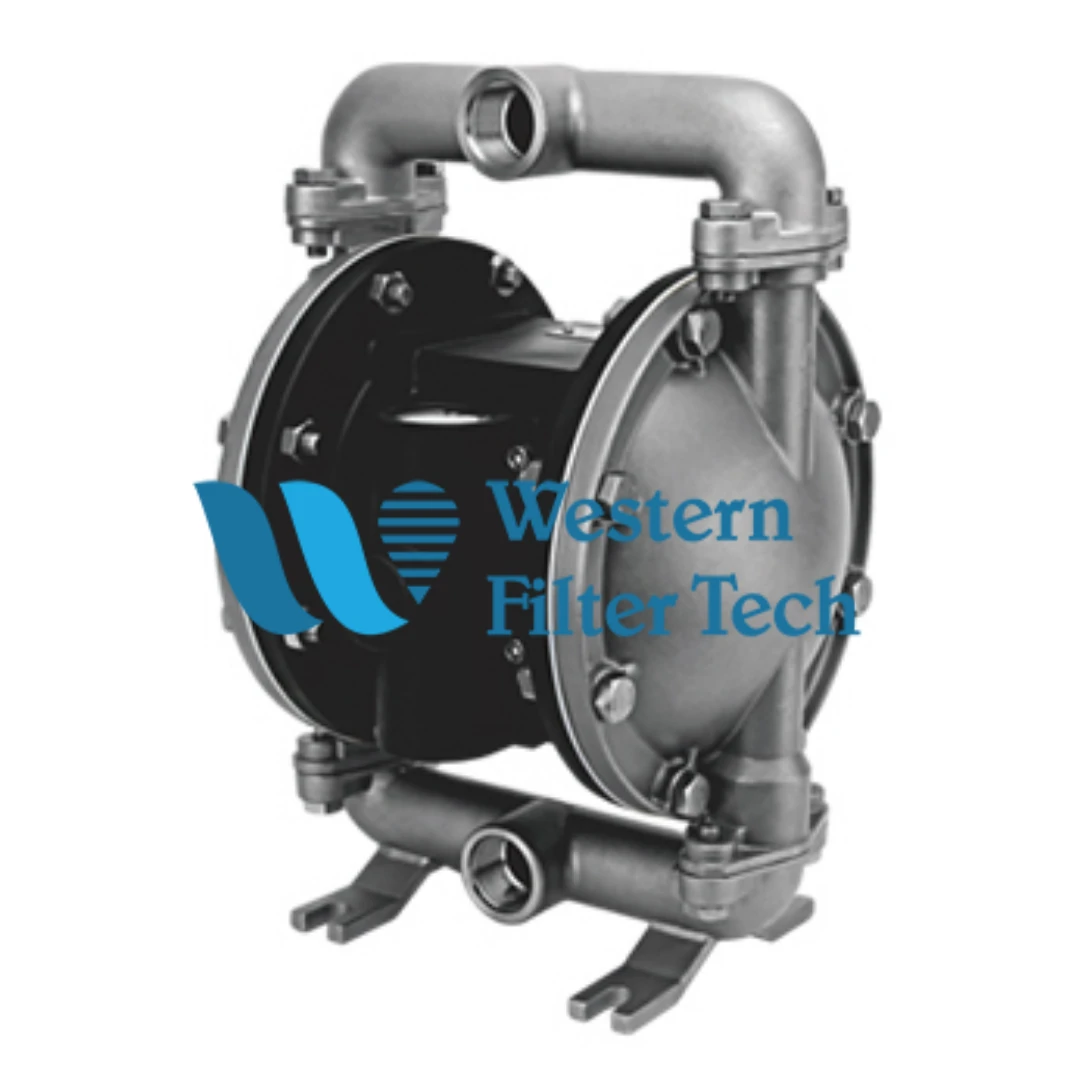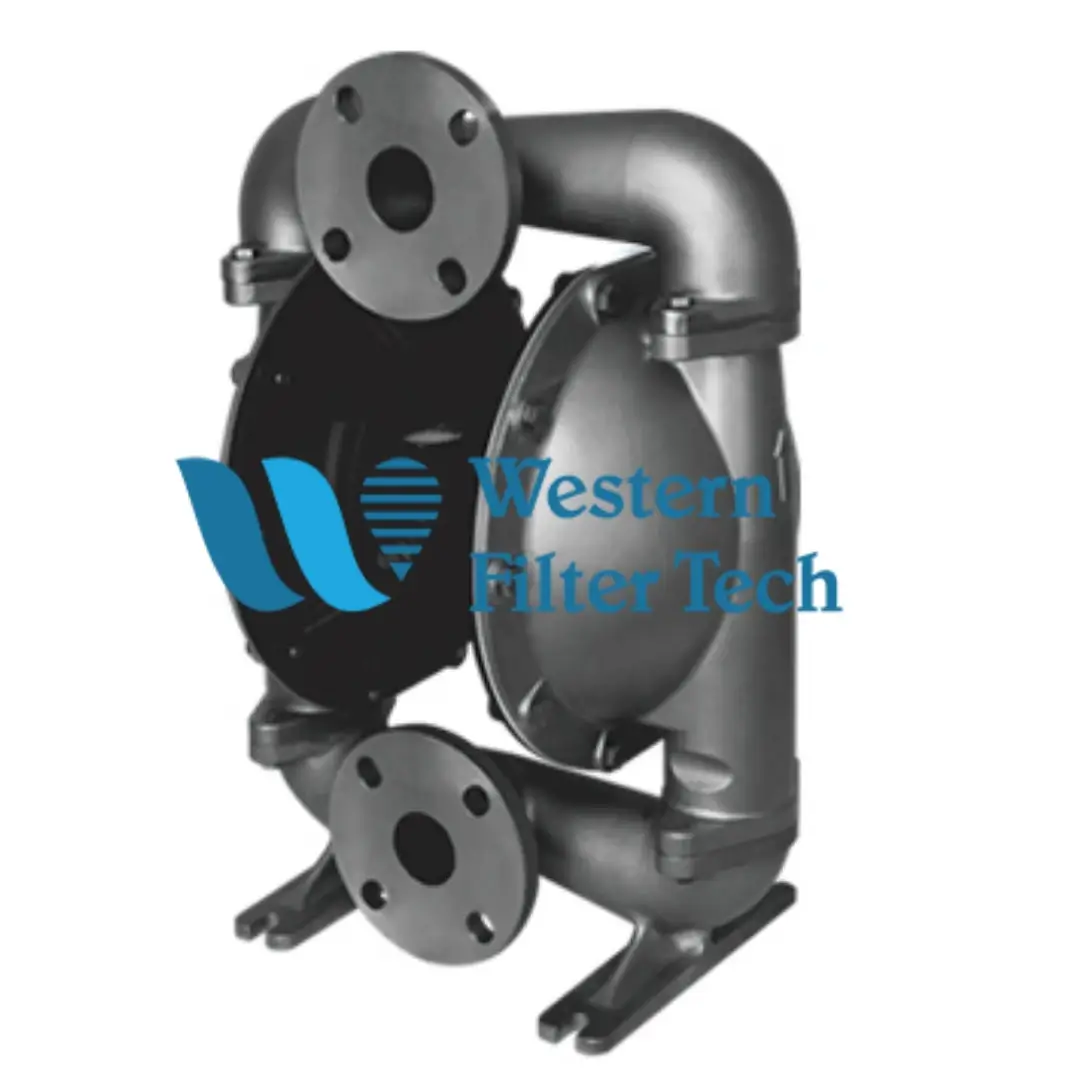AODD Pump BSK – USA
Western Filter Tech.,Ltd officially became the sole agency and distributor of BSK-USA Diaphragm Pump in Vietnam
What is an Air-Operated Double-Diaphragm pump?
An Air-Operated Double-Diaphragm pump (AODD) is a type of positive displacement (PD) pump. It consists of two pumping chambers that are alternately filled and discharged by the movement of flexible diaphragms. Compressed air is alternately fed to, and vented from, air chambers on the opposite sides of the diaphragms to create the pumping action.
AODD pumps are generally used for transfer applications and can handle a wide variety of feeds including sludges, slurries, abrasive and shear sensitive fluids. Although they are robust, reliable and easy to maintain they can be noisy, prone to icing, and are limited to low pressure applications.
How does an AODD pump work?
An AODD pump moves fluid by the alternate and repeated back-and-forth movement (strokes) of two flexible membranes or diaphragms mounted on a common shaft. Although diaphragm pumps can be driven directly, with the shaft connected directly to a motor, an AODD pump uses compressed air with a sophisticated distribution system directing the air alternately to two air chambers on the opposite sides of the diaphragms. Figure 1 shows a complete cycle of an AODD pump:
- The compressed air control system directs air to air chamber A.
- The shaft moves to the left, and the movement of the diaphragms increases the volume of pumping chamber B and, at the same time, reduces the volume of pumping chamber A (Figure 1a). Valves on either side of the pumping chambers ensure that fluid flow through the pump only occurs in one direction: from inlet to discharge. The effect is to draw fluid from the inlet into chamber B, and discharge it from chamber A.
- As the shaft completes the stroke, the air distribution system vents air chamber A and directs the compressed air to air chamber B.
- The shaft now moves to the right, reducing the volume of pumping chamber B and, at the same time, expanding the volume of pumping chamber A (Figure 1b). Fluid is now discharged from chamber B, and drawn into chamber A.
- As the shaft completes the stroke, the air distribution system vents air chamber B and the cycle repeats when compressed air is directed to air chamber A again.
- 1/4 inch port size
- 1/2 inch port size
- 1 inch port size
- 1,5 inch port size
- 2 inch port size
- 3 inch port size
Power of operation:
Principle of AODD pump see at below
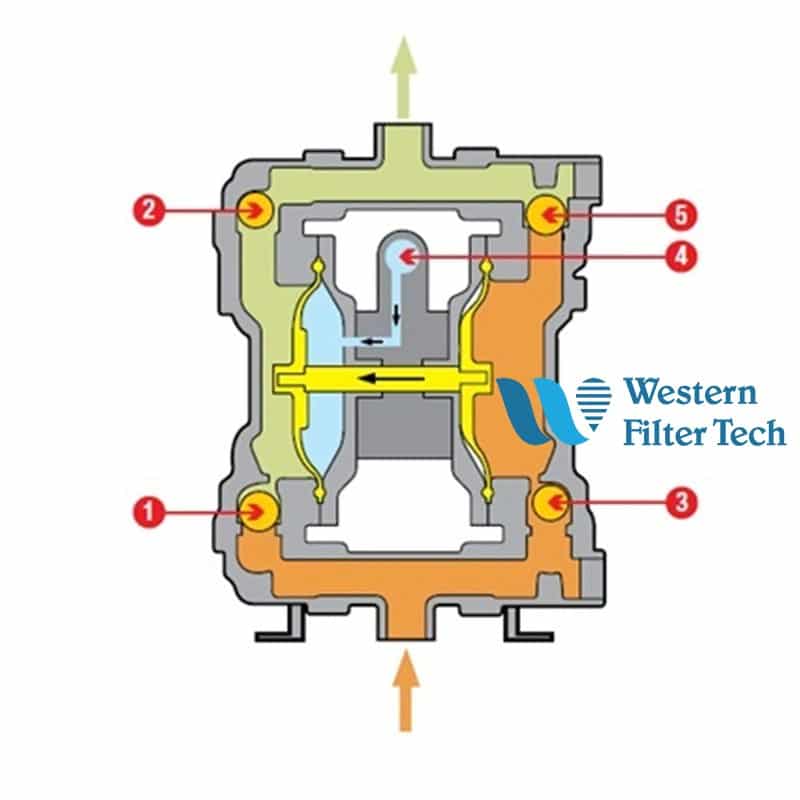
-
The pneumatic valve on the side supplies compressed air to the left chamber, creating pressure to push the diaphragm to the left and out. Under this pressure closes valve number 1, opens valve number 2, allowing the liquid to be pumped away.
-
The pneumatic valve on the side supplies compressed air to the left chamber, creating pressure to push the diaphragm to the left and out. Under this pressure closes valve number 1, opens valve number 2, allowing the liquid to be pumped away. The right diaphragm is also moved in the same direction to the left side through the connecting shaft. Creating vacuum pressure closes valve 4 and opens valve 3, drawing liquid into the chamber to prepare for the next cycle. End of cycle 1.
-
The pneumatic valve on the side supplies compressed air to the right chamber, creating pressure to push the diaphragm to the right and out. Under this pressure closes valve number 3, opens valve number 4, allowing liquid to be pumped away. The diaphragm on the left is also moved in the same direction to the right side through the connecting shaft. Creating vacuum pressure closes valve #2 and opens valve #1, drawing liquid into the chamber to prepare for the next cycle. End of cycle 2.The pumping process is continued through cycle number 1.(For a 2-input product with 2 different chemicals, the pump operation is still the same. Chemical 1 enters through valve 1, chemical 2 enters through valve 3. And is mixed in the ratio 50/ 50 at output – this ratio depends on the viscosity of the chemical)
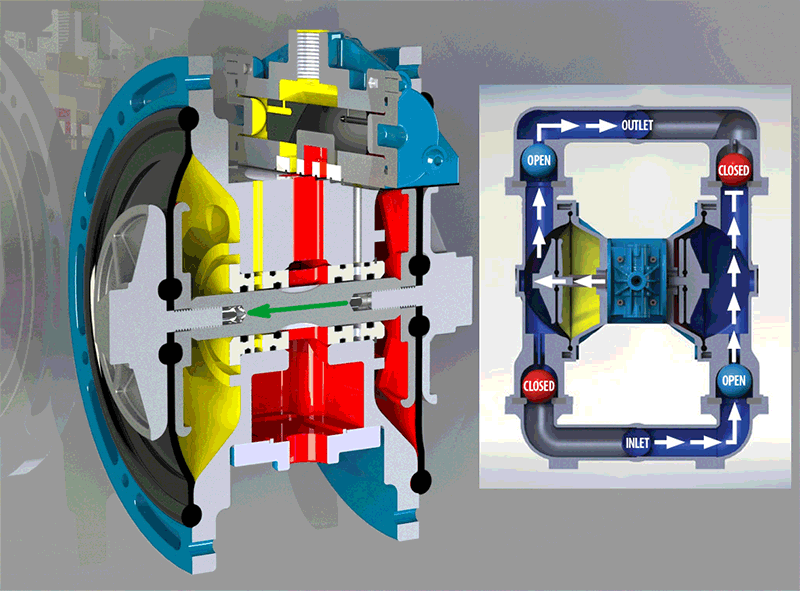
What are the main features and benefits of an AODD pump?
AODD pumps are essentially leak-free. There are only stationary seals between the wetted parts and the outside environment so leakage can only occur if one or both diaphragms fail. As part of a general maintenance program, diaphragms should be replaced regularly, according to the manufacturer’s recommendations. Diaphragms suffer less wear in an AODD pump than those in a mechanically driven diaphragm pump because of the benefit of pressure balancing by the compressed air supply.
AODD pumps are capable of handling abrasive, highly viscous fluids, sludges or slurries. In addition, the gentle pumping action makes them ideal for shear-sensitive fluids. The four internal check valves generally use either a ball (or cone)/seat or flap design. Ball valves provide a better seal and are less prone to wear than flap designs. Since flap-type valves are hinged, long-term use eventually causes fatigue at the flexing point. Ball valves wear more evenly since the ball is free to rotate during operation and settle in a different position on the seat. Flap-type check valves have the advantage that they can more easily pass large solids entrained within the pumped fluid.
With no internal seals or moving components requiring lubrication and cooling, an AODD pump can be run dry indefinitely without damage. AODD pumps are self-priming and some are capable of a suction lift of up to 8m.
AODD pumps are suitable for use in hazardous areas because of the use of compressed air as the power source rather than electricity. For the same reason, an AODD pump can be safely submerged – as long as the air vent is above the liquid level.
What are the limitations of an AODD pump?
The efficiency and stability of an AODD pump is dependent on its compressed air supply. The compressed air supply must be at the same or a higher pressure than the fluid to be pumped. This tends to limit the use of AODD pumps to low pressure applications (typically 120psi). Pump speed is determined by the differential pressure of the air supply and pumped fluid. An increase in the pressure of the compressed air supply or a reduction in the pressure of the pumped fluid causes an increase in the pumping speed. If a constant flow is required it may be necessary to implement addition flow and pressure control.
The air distribution system provides the power and control for an AODD pump. The hardware is relatively cheap, simple and easy to maintain. However, in some plant environments, it may be necessary to filter expelled air to capture contaminants such as oil.
Icing can be a problem with poorly designed air distribution systems. The constant venting of air causes cooling and, in extreme cases, this can result in the build-up of ice around the air vent or within the distribution system. This problem can be minimized by avoiding constrictions, reducing the humidity of the compressed air supply, installing a heater or by reducing the pressure of the compressed air supply.
To see more even of BSK in Vietnam at Vietwater exhibition 2019
